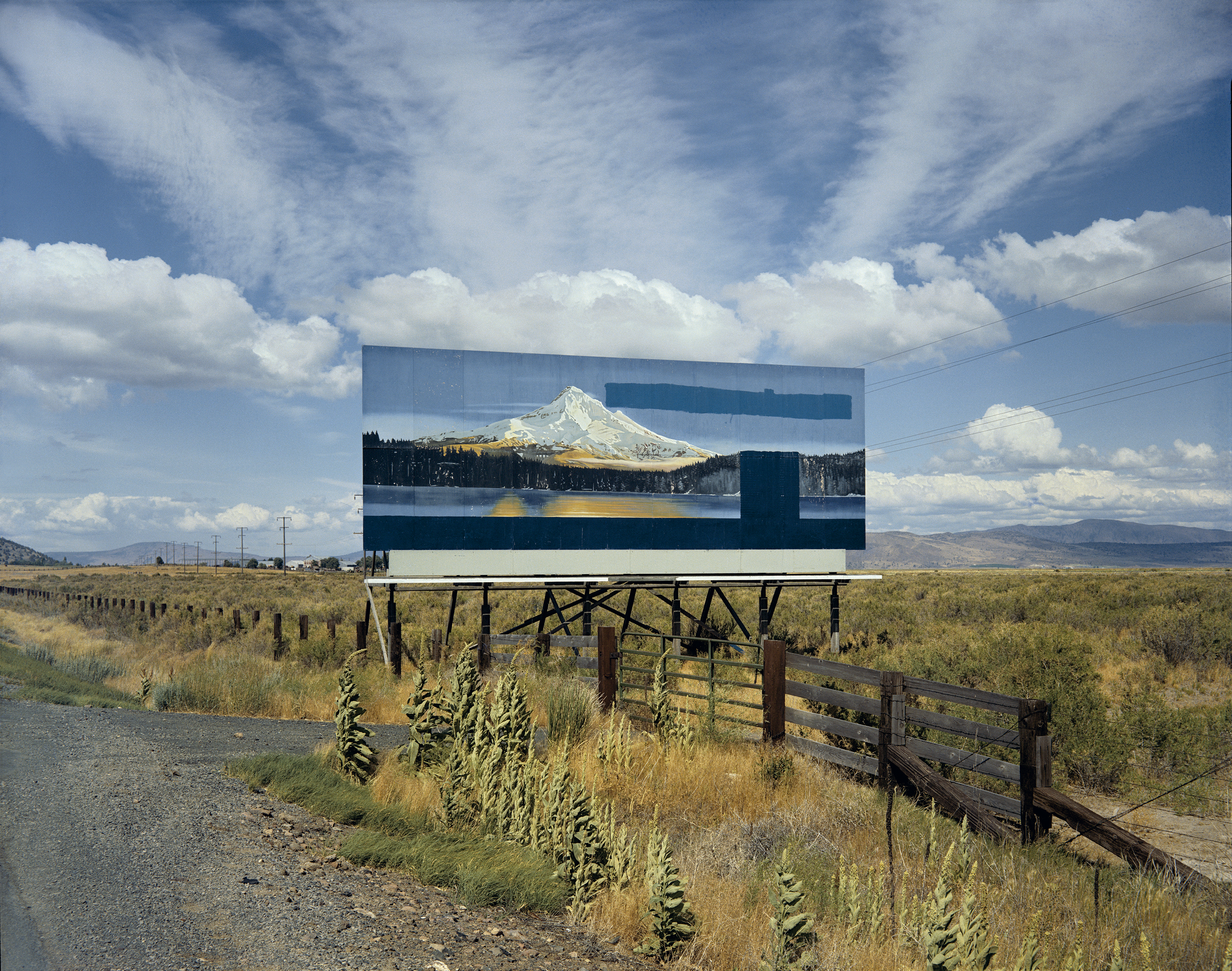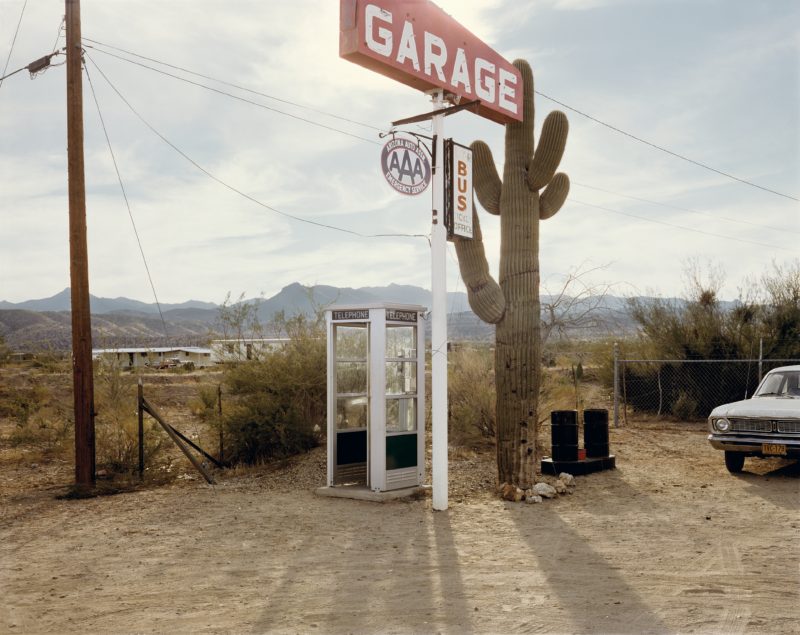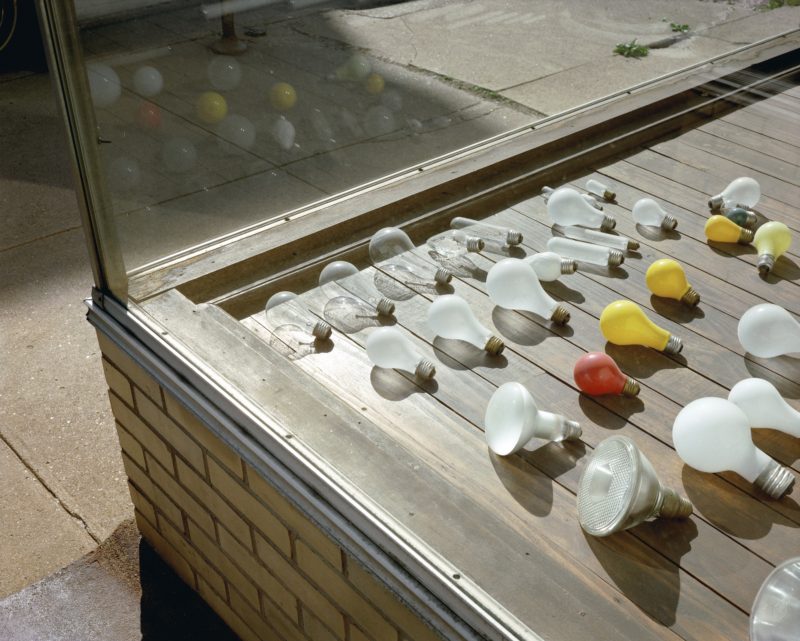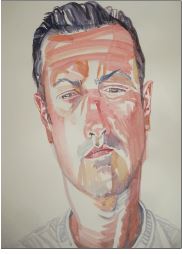***
A Major Retrospective of
Photographer Stephen Shore
by Carl Oprey
Contributing Art Editor
To hear Stephen Shore talk about his work sounds, perhaps, just like a technical process. Of lists. Of hitting a road trip with the aim of keeping a visual diary of meals, people, motel rooms and buildings. Using specifically an 8 x 10 camera, in a car, it reads as a list or an inventory. He wanted to take pictures that felt as natural as speaking did. As, perhaps, describing what it is in an image. Of how a building looks in two dimensions. All about science and apparatus.
By magic, (or perhaps death, if you’re Roland Barthes), such a listed methodology is filtered through the emotional eye of a human. Yet the human does not create the image. The human only chooses the image. And this makes all the difference.
U.S. 93, Wikieup, Arizona, December 14, 1976
I tend to think that ‘art’ imagery has that rush of emotion when it is chosen to be presented to us, within journalism, cathedrals, curated shows, web releases and the like. We’ll flock as secular pilgrims to Last Suppers and Virgin and Childs’ to witness emotion after seeing the image millions of times already. But there is apparently something about being in the presence of greatness…. Needless to say, the viewing impact of the high renaissance set against a humidity- and crowd-controlled conveyor belt of a modern gallery, fights against itself. Yet it’s with photography that we have this same immediacy. And it should also by rights, have the same effect after endless viewings in a variety of media. This show made me beg to differ.
Among the different suites of work that make up this exhibition — from the pieces where Shore had the audacity, aged fourteen, to ask Edward Steichen if he could bring his work in to show him, and of which MOMA then purchased three – to the collected found ephemera recreating other identities — this is a true chronology of an artist’s work. There is, however, something else.
West Third Street, Parkersburg, West Virginia, May 16, 1974
Jumping in a car with a camera obviously resulted in decades of cultural examination for Shore and, like the paintings once painted, were then relevant. Since photographs can only be read in the present, (Barthes and his camera as death machine again), maybe this work only really exists now, irrespective of when it was created. An under-populated Los Angeles in 1969, a Minnesota shop front, now worthless military medals. 1970s’ photographs of empty suburbia — public spaces unused. The ennui and hollowness of suburban and urban living against the romance of these once occupied spaces. Defining and now newly redefining America. Giving license to the void.
We live in a time where we can’t examine a country like this anymore, it’s impossible to do today. So it’s become a melancholia for humans via unoccupied spaces. Shore’s work makes you think of now, of today. And this is where the awe lays in this work. Immobile and frozen, it examines us. It’s a place where a voyeur becomes the emotional observer of another America. Perhaps it’s from the pages of that same school of American Psychology of Hopper and Carver – a gutted sadness that we now only view as luxury and good times.
Perhaps as an Englishman, this show reminds me of how much I miss America.
Stephen Shore. MoMA
November 17, 2017-May 28, 2018
11 W 53rd St, New York, NY 10019
Images used with permission of MoMA
About the author:
Carl Oprey is a freelance writer living in New York where he produces prose and scripts, and teaches at NYU. Originally from Liverpool,
England, he received his MA in Creative Writing from UEA and his first degree in fine art and art history from Liverpool. The combination has inclined his reviewing output toward gallery art and surrounding cultures. He hase also reviewed fiction and contributed social critique to a variety of online and print journals in the UK.
Carl recently completed The Boy Who Made the King Cry, a work of creative nonfiction, research heavy and based around real events in New York and Liverpool. You can read more about him in About Us.
Image Credits: Don Bachardy, Christopher Isherwood Foundation




Recent Comments